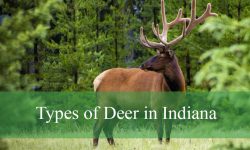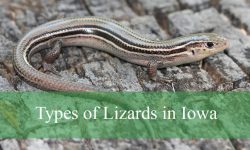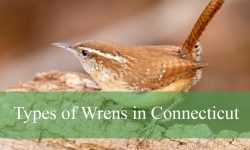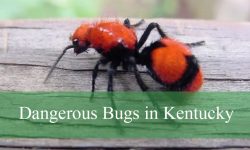California’s nights are far from silent. As the sun sets and the world grows quieter, many bird species begin to fill the darkness with their unique songs and calls. From the soft coos of owls to the tireless melodies of mockingbirds, these nocturnal singers bring life to the evening hours.
Identifying birds that sing at night can be both fascinating and challenging. Their voices carry across city streets, quiet valleys, and forested hillsides, each species with its own rhythm and tone. For birdwatchers, listening after dark opens up a new world of discovery.
In this guide, we’ll explore 20 birds that sing at night in California. You’ll learn their identifying features, behaviors, and the special qualities of their nighttime songs, making it easier to recognize and appreciate these hidden voices of the night.
Types of Birds That Sing at Night in California
Northern Mockingbird (Mimus polyglottos)
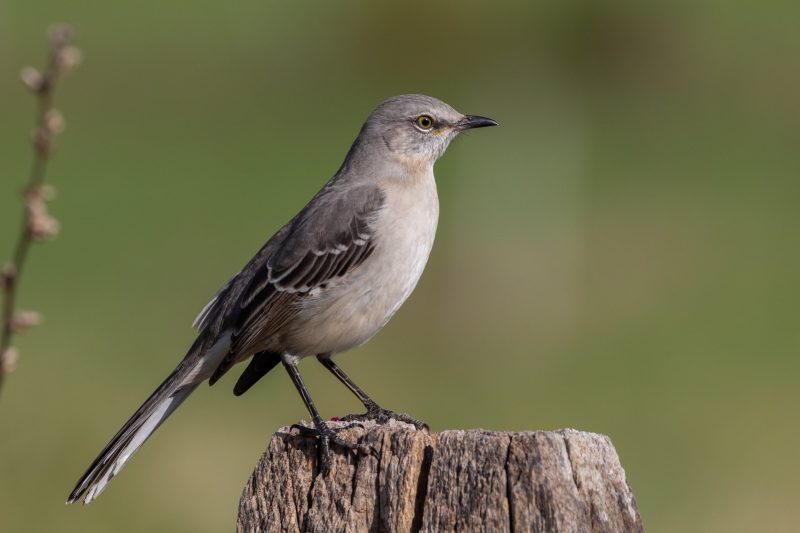
The Northern Mockingbird is one of the most iconic night singers in California, often filling quiet suburban neighborhoods with its complex and varied songs. It is a medium-sized songbird, about 8–10 inches long, with gray plumage, a pale belly, and distinctive white wing patches that flash during flight. This bird is widely recognized for its ability to mimic the songs of other bird species, as well as mechanical sounds like car alarms or whistles.
Unlike many birds that sing mainly during the day, the Northern Mockingbird is known for its extended nighttime singing, especially during the breeding season. Males sing most actively at night when they are unmated or defending a territory, producing a long series of repeated phrases. Its voice is rich, bold, and endlessly creative, making it one of the most noticeable night vocalists in urban and rural California.
In California, the Northern Mockingbird can be found in open habitats, city parks, orchards, and residential areas. They are year-round residents across most of the state, from coastal regions to inland valleys. Their nighttime songs often echo through warm evenings, particularly in Southern California where they thrive in both natural and urban landscapes.
Western Screech-Owl (Megascops kennicottii)
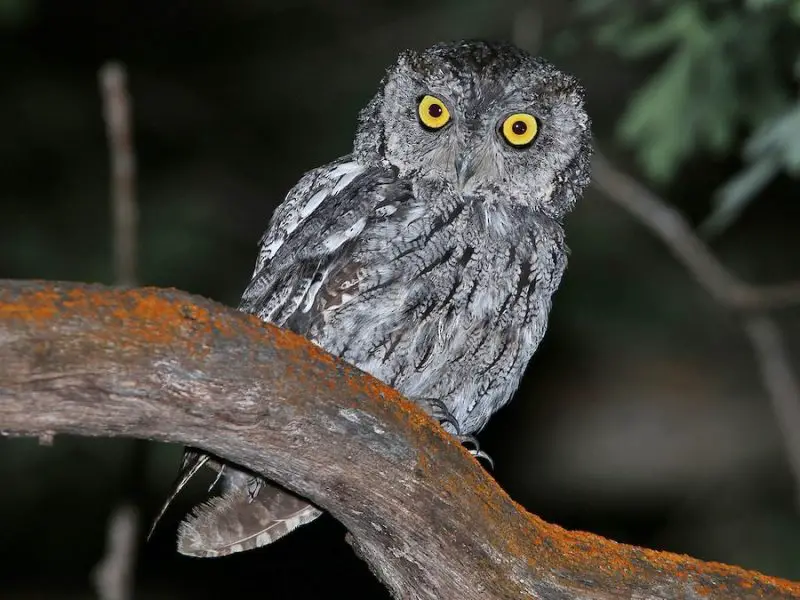
The Western Screech-Owl is a small, stocky owl measuring around 8–10 inches in length, with mottled gray or brown plumage that blends seamlessly into tree bark. Its large yellow eyes and ear tufts give it a distinctive appearance, though it can be difficult to spot due to its excellent camouflage. Despite its name, this owl does not produce a harsh screech but instead a series of soft, rhythmic whistles that rise and fall in pitch.
At night, the Western Screech-Owl is highly vocal, and its haunting trills can often be heard in wooded areas, deserts, and even suburban backyards. It is most active after dusk, calling to establish territory and attract a mate. Their song is often described as a bouncing ball sound, creating an eerie but fascinating atmosphere on quiet California nights.
This owl is widely distributed throughout California, from coastal forests to arid foothills and canyons. They are often heard more than seen, especially in areas with large trees or near rivers where they hunt insects, small mammals, and reptiles. Their nighttime calls add a mysterious charm to California’s natural soundscape.
Barn Owl (Tyto alba)
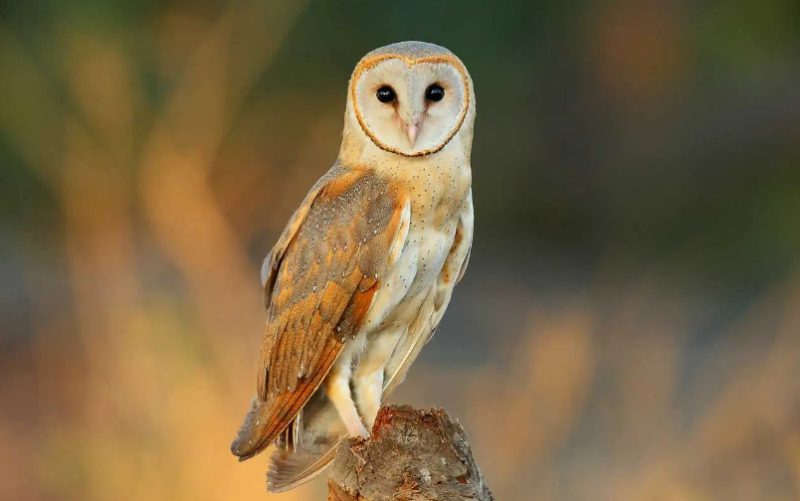
The Barn Owl is instantly recognizable by its heart-shaped white face, long wings, and slender body. Measuring 13–15 inches in length with a wingspan of up to 3.5 feet, it has pale golden-buff plumage above and pure white below. Unlike many other owls, the Barn Owl does not hoot; instead, it produces a chilling, raspy screech that echoes across open fields at night.
Barn Owls are nocturnal hunters, gliding silently on broad wings as they search for rodents in farmlands, grasslands, and marshes. Their eerie calls can often be heard during nighttime hunts, adding a ghostly quality to California’s countryside. While they do not sing melodically, their shrieks are a defining sound of the night in many rural and suburban areas.
In California, Barn Owls are widespread and can be found throughout the state. They often nest in barns, old buildings, and tree cavities, giving them their name. Their haunting calls are especially common in agricultural valleys and open countryside, where they play an important role in controlling rodent populations.
Great Horned Owl (Bubo virginianus)
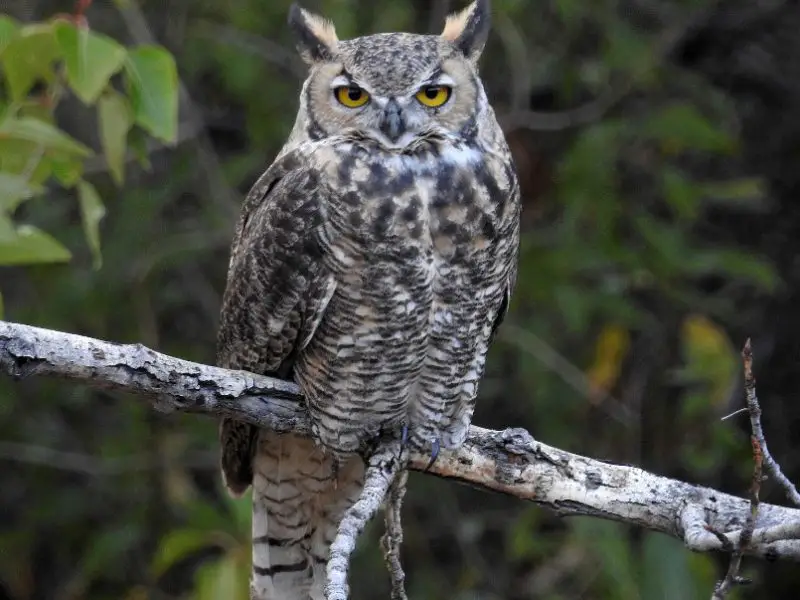
The Great Horned Owl is one of California’s largest and most powerful owls, reaching 18–25 inches in length with a wingspan of up to 5 feet. Its broad body, large ear tufts, and piercing yellow eyes make it one of the most iconic nocturnal raptors. Its plumage is mottled brown and gray, providing excellent camouflage against tree bark.
This owl is famous for its deep, resonant hooting, usually delivered in a series of four to five notes. At night, the Great Horned Owl’s hoots can travel long distances, often serving as territorial calls. Males and females sometimes duet, creating a haunting nighttime chorus that echoes through forests, deserts, and even city parks.
Great Horned Owls are widespread in California, from coastal cliffs to high mountains and deserts. They are powerful hunters, capable of preying on mammals as large as skunks and rabbits. Their iconic hoots make them one of the most recognizable nighttime voices in the state.
Common Poorwill (Phalaenoptilus nuttallii)

The Common Poorwill is a small, nocturnal bird about 7–8 inches long with cryptic brown, gray, and black plumage that makes it nearly invisible during the day. It belongs to the nightjar family and is known for its short tail, rounded wings, and wide mouth adapted for catching flying insects. Its appearance allows it to blend perfectly into rocky and desert environments.
At night, the Common Poorwill produces a distinctive, repetitive “poor-will” call, from which it gets its name. The sound is soft but persistent, carrying through warm summer evenings in California’s deserts and foothills. Unlike songbirds, its call is simple, but it is one of the most characteristic sounds of the night in arid landscapes.
In California, the Common Poorwill is found mainly in open habitats, such as deserts, scrublands, and rocky hillsides. It is especially common in the southern and eastern parts of the state. This bird is notable for being the only bird known to enter true hibernation, sometimes going dormant during cold spells. Its repetitive nighttime song adds a unique voice to California’s desert nights.
Common Nighthawk (Chordeiles minor)
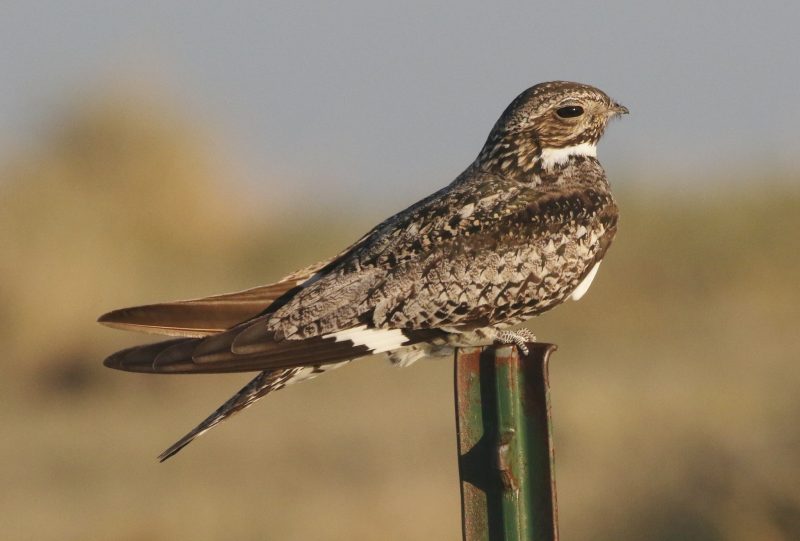
The Common Nighthawk is a slender bird measuring 8–10 inches in length, with long pointed wings and a notched tail. Its plumage is a mottled mix of gray, black, and white, providing excellent camouflage against gravel or bare ground where it often nests. In flight, it shows a distinctive white bar across each wing.
At dusk and during the night, the Common Nighthawk becomes active, feeding on flying insects it catches in midair. Its calls include a nasal, sharp “peent” sound, often heard as it swoops and dives through the sky. During courtship flights, males produce a dramatic booming sound as air rushes through their wings during steep dives.
In California, Common Nighthawks are most often found in open areas such as grasslands, deserts, and even urban rooftops. They are more commonly heard during summer evenings when they migrate into the state to breed. Their sharp calls and aerial displays make them one of the more dramatic nighttime birds across California’s skies.
California Towhee (Melozone crissalis)
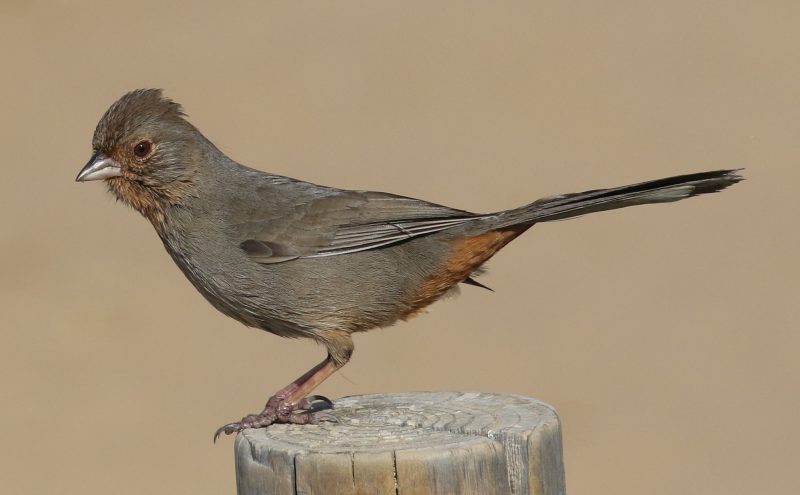
The California Towhee is a medium-sized sparrow-like bird, about 8–9 inches long, with plain brown plumage and a distinctive rust-colored patch under the tail. While not flashy in appearance, its simplicity makes it easy to recognize among California’s garden birds. Its large size and heavy bill also distinguish it from other sparrows.
Although California Towhees are not known for elaborate songs, males often produce a sharp metallic “chink” call and a simple series of notes. They can sometimes be heard singing softly in the early morning and late evening, particularly in suburban areas where artificial light may encourage nighttime activity. Their calls are repetitive but carry well in quiet neighborhoods.
This species is found year-round in California, thriving in chaparral, oak woodlands, and residential gardens. They often stay close to the ground, scratching through leaves in search of insects and seeds. While daytime is their most active period, their occasional late-night songs are a familiar sound in both rural and urban areas.
Killdeer (Charadrius vociferus)
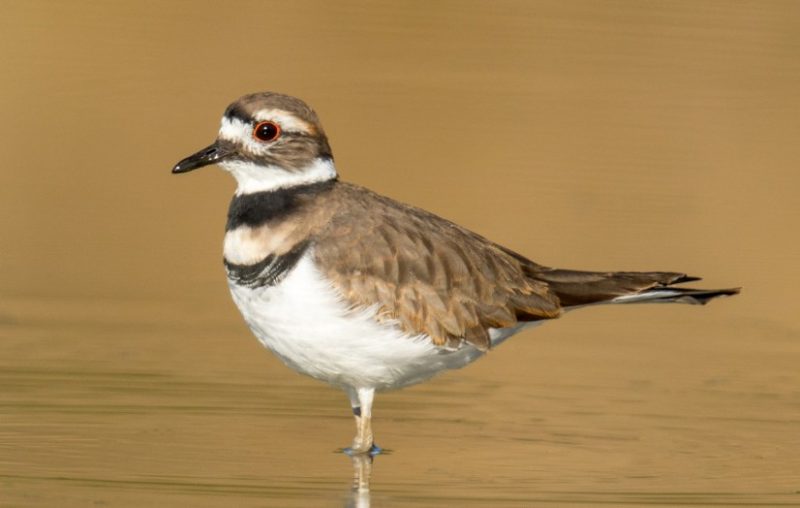
The Killdeer is a slender shorebird measuring 9–11 inches in length, with brown upperparts, white underparts, and two bold black breast bands. Its long legs and loud voice make it one of the easiest plovers to identify, even far from water. Killdeer are often found in open fields, parking lots, and grasslands across California.
At night, Killdeer are surprisingly vocal, producing their piercing “kill-deer” calls as they fly overhead. They are especially active during migration and on bright moonlit nights, when they feed and move about under the cover of darkness. Their loud, ringing voices make them one of the most noticeable nighttime birds in open landscapes.
In California, Killdeer are common year-round, particularly in agricultural valleys, wetlands, and suburban areas. Because they often nest on gravel or bare ground, their nighttime calls are frequently heard near human settlements. Their nocturnal activity makes them one of the few shorebirds that regularly sing at night.
Western Meadowlark (Sturnella neglecta)
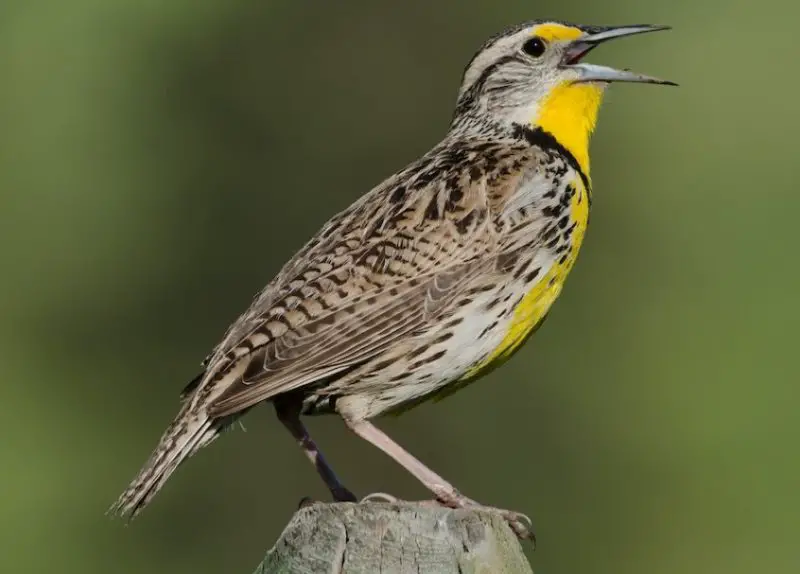
The Western Meadowlark is a medium-sized songbird, 8–11 inches long, with a bright yellow belly and a bold black “V” on its chest. Its upperparts are streaked brown, giving it camouflage in grasslands. In flight, its short tail with white outer feathers is a helpful field mark.
Known for its rich, flute-like song, the Western Meadowlark is one of California’s most celebrated singers. While it primarily sings during the day, males sometimes continue their melodic whistles into the evening or nighttime, especially during the breeding season. Their song is sweet, complex, and carries long distances across open prairies and farmlands.
This bird is widely found across California in meadows, fields, and agricultural lands. During spring and summer, their songs echo across the Central Valley and grasslands. On warm nights, it is not unusual to hear a meadowlark singing under the stars, adding a lyrical note to California’s nocturnal soundscape.
American Robin (Turdus migratorius)
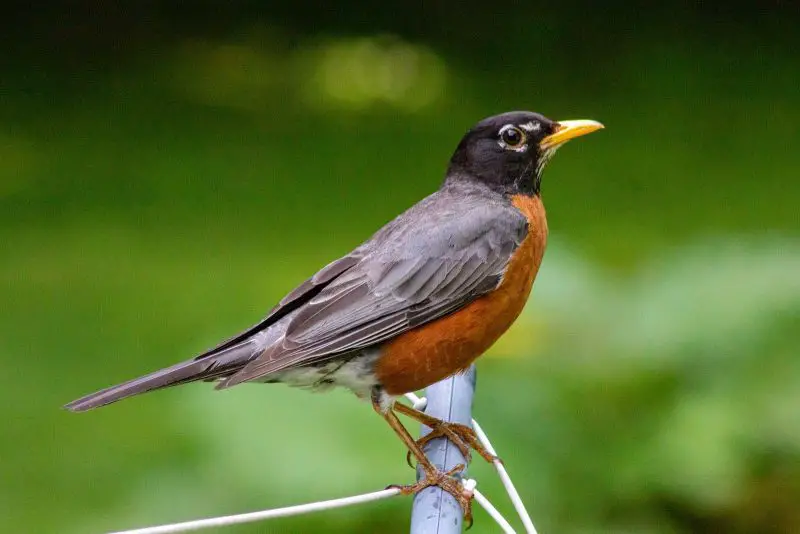
The American Robin is one of the most familiar songbirds in California, measuring about 10 inches in length with a brick-red breast, dark gray back, and yellow bill. Often seen hopping across lawns, it is a well-known symbol of spring. Despite being a common daytime bird, robins are also among the species that sing at night.
Robins produce a melodious, flute-like song, often described as “cheerily, cheer-up, cheerio.” They are especially active singers at dawn and dusk, but in urban areas with bright streetlights, they may continue singing long into the night. This nocturnal singing is thought to be influenced by artificial light and the reduced competition of nighttime soundscapes.
In California, robins are found across a wide range of habitats, from forests to city neighborhoods. Their nighttime songs are particularly common in suburban areas, where artificial lighting alters their natural behavior. As a result, the American Robin has become one of the most widely heard nighttime singers in California’s cities.
Song Sparrow (Melospiza melodia)
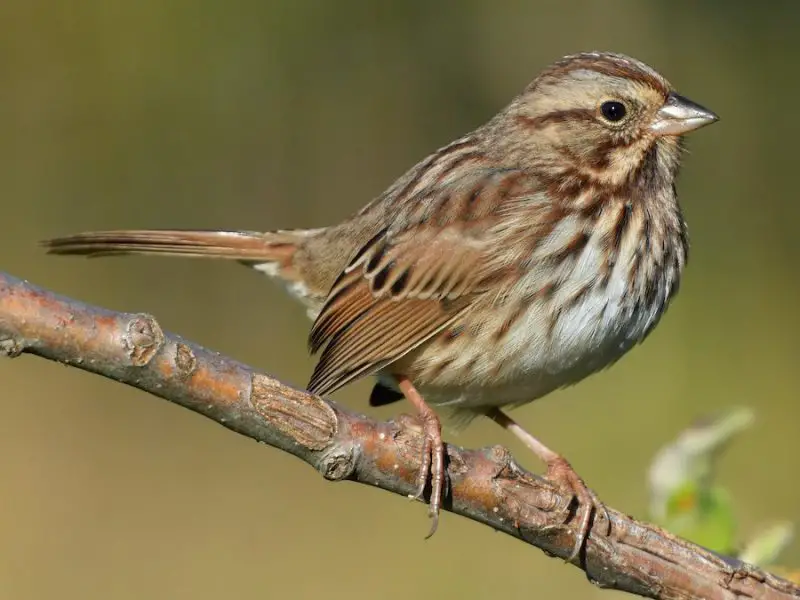
The Song Sparrow is a small to medium-sized sparrow, about 5–7 inches long, with streaked brown plumage and a distinctive dark spot on the chest. Its modest appearance hides one of the most varied and beautiful songs among sparrows. Each individual has its own unique variations, making it a delightful bird to identify by ear.
Song Sparrows are known for their cheerful, melodious songs, often beginning with a few sharp notes followed by a sweet, complex trill. While they usually sing during the day, individuals living near artificial lights sometimes continue singing into the night. This behavior is most often observed during spring and early summer when breeding activity is high.
In California, the Song Sparrow is widespread in wetlands, brushy fields, and suburban gardens. They are year-round residents in many areas and are especially abundant in coastal marshes. Their tendency to sing at night under artificial lights makes them a familiar voice even after dark in populated regions.
White-crowned Sparrow (Zonotrichia leucophrys)
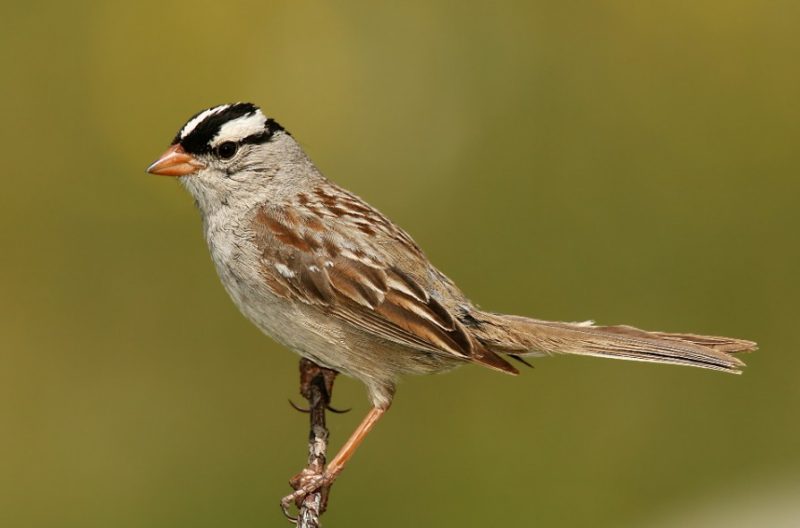
The White-crowned Sparrow is a striking sparrow about 6–7 inches long, easily recognized by its bold black-and-white striped head. Its body is gray with brown wings, and it has a crisp, elegant appearance compared to other sparrows. During migration, California becomes an important stopover for this species.
Its song is clear and whistled, beginning with a series of long notes followed by trills and buzzes. White-crowned Sparrows are known to sing not only during the day but also at dusk and into the night, particularly while migrating. Their songs are often described as sweet and plaintive, filling the evening air with delicate music.
In California, they are common winter visitors and migrants, especially in coastal areas, open fields, and city gardens. During migration periods, their songs may be heard late into the evening or night as they move under cover of darkness. This behavior makes them one of the most frequently heard nighttime sparrows in the state.
Spotted Towhee (Pipilo maculatus)
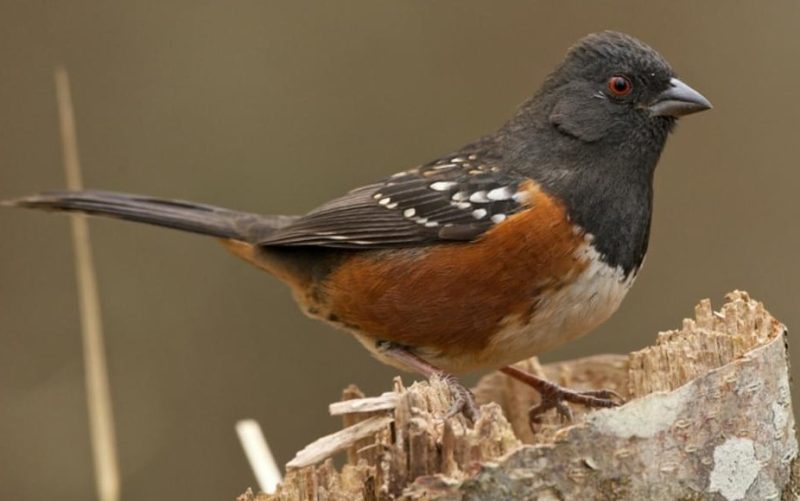
The Spotted Towhee is a striking sparrow-sized bird, about 6–7 inches long, with a black head and back, white spots on its wings, and rich rufous sides. Its bold plumage makes it one of the most attractive towhees in California. They are usually seen scratching noisily on the ground under shrubs or along woodland edges.
While their song is a buzzy trill during the day, Spotted Towhees occasionally give sharp, metallic “chek” calls at night. These calls are not complex songs but serve as contact or alarm notes, often heard when the bird is disturbed in darkness. Their nighttime sounds are brief but distinctive, especially in areas where they are common.
In California, Spotted Towhees are found year-round in chaparral, forest edges, and suburban gardens. Though they are primarily daytime birds, their occasional nighttime calls add another layer of sound to California evenings, particularly in brushy or wooded habitats.
Northern Saw-whet Owl (Aegolius acadicus)

The Northern Saw-whet Owl is one of the smallest owls in North America, measuring only 7–8 inches long with a round head, large yellow eyes, and no ear tufts. Its brown plumage with white streaking helps it remain well-camouflaged against tree trunks. Despite its tiny size, it has a powerful voice that travels far at night.
This owl’s call is a series of high-pitched, repetitive whistles that sound like “toot, toot, toot,” continuing steadily for minutes at a time. These notes are most often heard at night during the breeding season, serving as a territorial and courtship call. Their persistent, almost mechanical rhythm makes them one of the more unusual nighttime voices in California forests.
In California, Northern Saw-whet Owls inhabit dense forests, especially in mountainous regions. They are secretive and rarely seen, but their nighttime whistles reveal their presence to attentive listeners. Their nocturnal song adds mystery to California’s woodlands after dark.
Long-eared Owl (Asio otus)
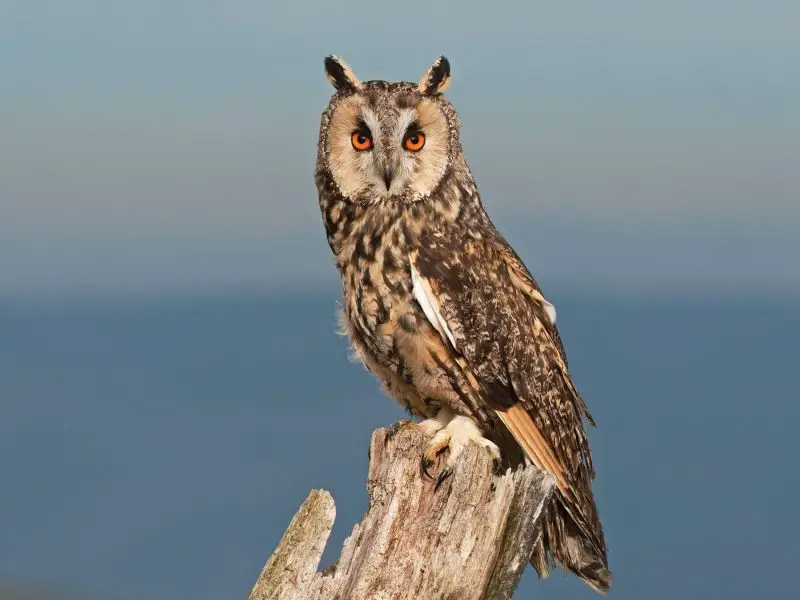
The Long-eared Owl is a slender, medium-sized owl, about 14–16 inches long, easily recognized by its tall ear tufts and striking orange facial disks. Its mottled brown plumage provides excellent camouflage in wooded habitats. Though more secretive than the Great Horned Owl, its calls can be heard on calm nights.
At night, males give a series of low, muffled hoots spaced several seconds apart. They may also produce squeaks and barks during courtship or territorial displays. These sounds are most often heard in spring and summer, when owls are breeding. Their hoots are soft but can carry surprising distances in quiet environments.
In California, Long-eared Owls are found in riparian woodlands, deserts with scattered trees, and agricultural lands. They are more often detected by sound than sight, making their nighttime calls an important clue for birdwatchers searching for this elusive species.
Burrowing Owl (Athene cunicularia)
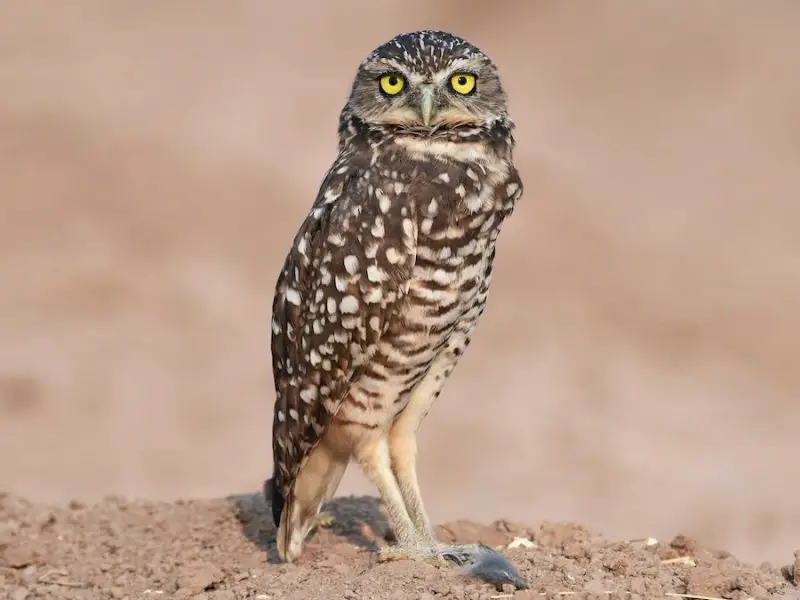
The Burrowing Owl is a small, long-legged owl, about 9–11 inches tall, with bright yellow eyes and a round head lacking ear tufts. Unlike most owls, it is often active during the day, but its behavior continues after sunset, making it one of California’s more unique nocturnal birds.
At night, Burrowing Owls produce a variety of sounds, including soft cooing, clucking, and chattering calls. These vocalizations are used to communicate with mates and young, and sometimes to defend territories. Their unusual calls, combined with their tendency to live in open habitats, make them quite distinctive compared to forest-dwelling owls.
In California, Burrowing Owls live in grasslands, deserts, and agricultural areas, often taking over abandoned ground squirrel burrows. Their nighttime sounds can often be heard in wide-open landscapes, adding character to the nocturnal chorus of the state’s arid regions.
Great Blue Heron (Ardea herodias)
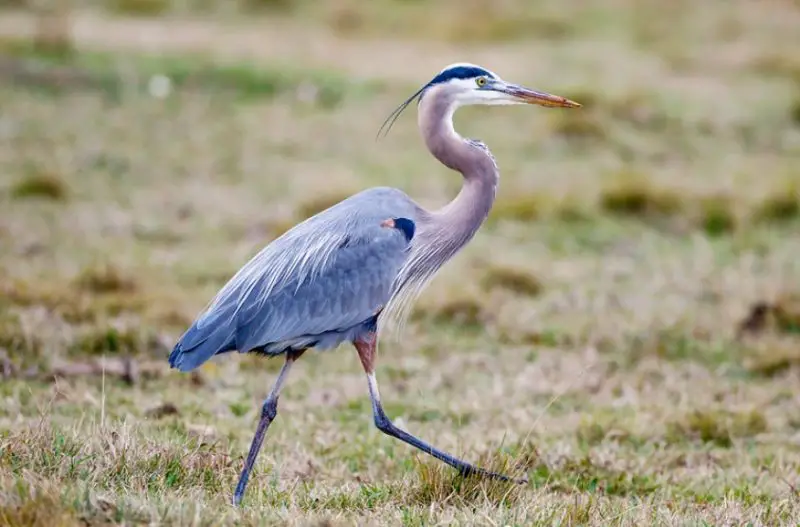
The Great Blue Heron is California’s largest heron, standing about 4 feet tall with a wingspan of nearly 6 feet. Its slate-blue feathers, long legs, and dagger-like bill make it unmistakable. While graceful by day, it also has a surprising nocturnal presence.
Although not a songbird, the Great Blue Heron produces harsh, croaking squawks, especially when flying at night or when disturbed at a nesting colony. These guttural calls can sound eerie in the darkness, echoing across wetlands and coastal habitats. Their vocalizations are usually short but very loud, often startling to those who hear them unexpectedly.
In California, Great Blue Herons are widespread, inhabiting marshes, lakes, rivers, and coastal estuaries. They often feed by moonlight or in artificial light, and their night calls are most common near rookeries or while flying between feeding sites.
Black-crowned Night-Heron (Nycticorax nycticorax)
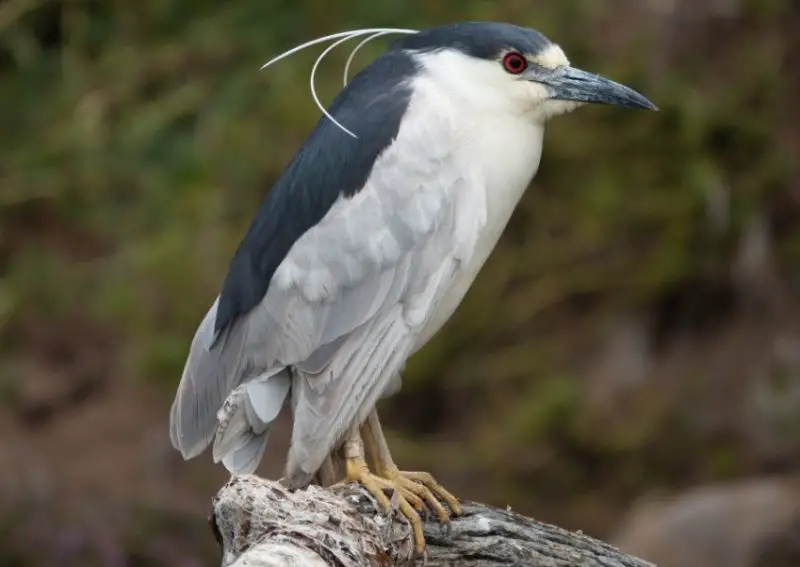
The Black-crowned Night-Heron is a medium-sized wading bird, about 23–28 inches long, with a stocky body, short neck, and thick bill. Adults are striking, with black caps, gray wings, and red eyes, while immatures are brown and streaked. True to its name, this species is most active after sunset.
At night, these herons produce loud, raspy “quawk” calls, often as they fly between feeding areas. Their squawks are harsh and unmistakable, regularly heard after dusk near wetlands, rivers, and coastal lagoons. Unlike other herons that are mainly diurnal, Black-crowned Night-Herons are strongly nocturnal hunters.
In California, they are common residents of wetlands, lakes, and coastal areas. Colonies of these birds often come alive with noise after sunset, as individuals leave to forage under cover of darkness. Their harsh calls are one of the defining nighttime sounds of marshlands across the state.
Yellow-breasted Chat (Icteria virens)
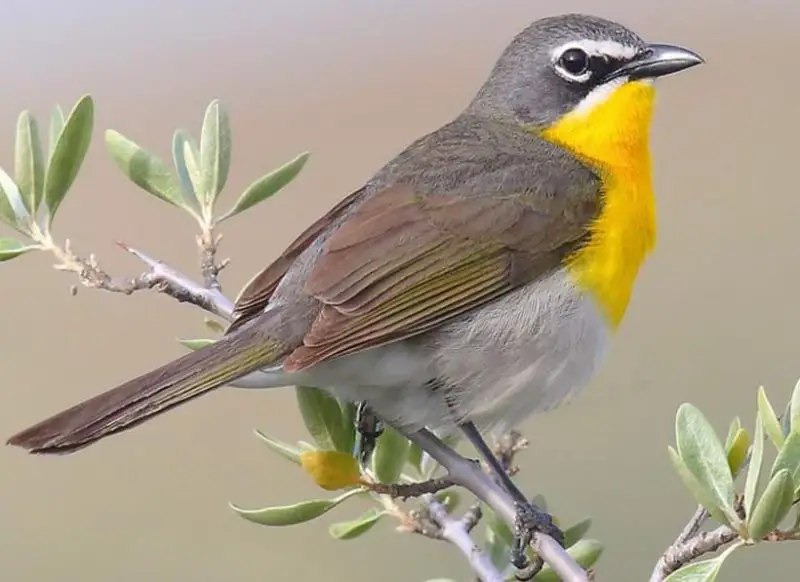
The Yellow-breasted Chat is the largest species of warbler in North America, measuring about 7–8 inches long. It is easily recognized by its bright yellow breast, olive-green back, white spectacles around the eyes, and long tail. Though often shy and hidden in dense shrubs, its vivid coloration and loud voice give it away during the breeding season.
Unlike most warblers, the Yellow-breasted Chat has a varied and unusual song, filled with whistles, cackles, and harsh notes. During spring and summer, males often sing not only during the day but also late into the night, especially on moonlit evenings. This behavior makes it one of the few songbirds in California that regularly sings in darkness.
In California, the Yellow-breasted Chat is found in riparian thickets, dense brushlands, and shrubby streamsides during the breeding season. Though more common in the southern and central parts of the state, its nocturnal songs can be heard in suitable habitats, adding a lively chorus to warm summer nights.
Western Whip-poor-will (Antrostomus vociferus)
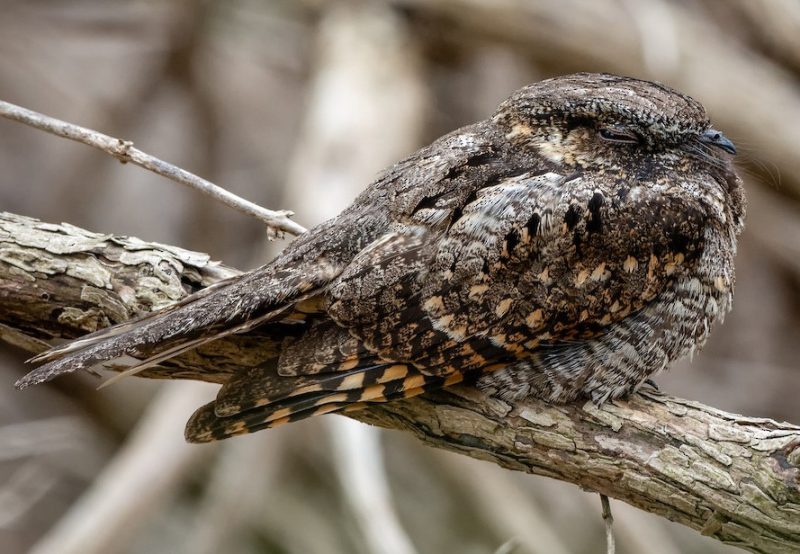
The Western Whip-poor-will is a nocturnal nightjar, about 9–10 inches long, with mottled gray-brown plumage that blends perfectly with leaf litter. Its wide mouth is adapted for catching insects in flight, and its large dark eyes are well-suited for nighttime activity. This cryptic bird is rarely seen but often heard after dusk.
Its song is a repetitive, rhythmic “whip-poor-will” phrase, repeated endlessly through the night. The call has a rolling, haunting quality and can continue for hours, creating a steady background of sound in quiet forests. Males sing most persistently during the breeding season, both to establish territory and attract mates.
In California, the Western Whip-poor-will is rare and localized, occurring mainly in forested mountain areas. When present, its continuous nighttime chanting makes it one of the most distinctive nocturnal voices. Hearing a whip-poor-will is considered a special experience, as the species is secretive and not widespread in the state.
FAQs about Birds That Sing at Night in California
Why do some birds sing at night in California?
Many birds sing at night for reasons such as attracting mates, defending their territory, or taking advantage of quieter nighttime hours. Artificial lights in urban areas can also trigger nocturnal singing, as birds mistake them for daylight.
Which is the most common night-singing bird in California?
The Northern Mockingbird (Mimus polyglottos) is the most commonly heard night singer in California. Males often sing for hours after dark, especially during the breeding season, producing a wide range of mimicked calls.
Do owls in California sing or just call at night?
Owls such as the Great Horned Owl and Western Screech-Owl primarily produce hoots, whistles, or trills rather than melodic songs. While not “songs” in the traditional sense, their calls are essential for communication and territorial defense.
Are night-singing birds easier to hear in cities or rural areas?
Both environments offer opportunities, but city birds like the American Robin and Song Sparrow are often more noticeable at night due to artificial lights and reduced daytime noise. In rural areas, owls, poorwills, and nighthawks are more likely to be heard.
What time of year do birds most often sing at night in California?
Night singing is most common during the spring and summer breeding seasons, when males are most vocal in attracting mates. Migration periods in spring and fall can also bring nocturnal calls from sparrows and other species.
Can hearing birds at night help with identification?
Yes. Each species has distinct patterns, pitches, and rhythms. For example, the repetitive whistles of the Northern Saw-whet Owl are very different from the harsh squawks of a Black-crowned Night-Heron. Birders often use sound to identify species that are hard to see in the dark.


